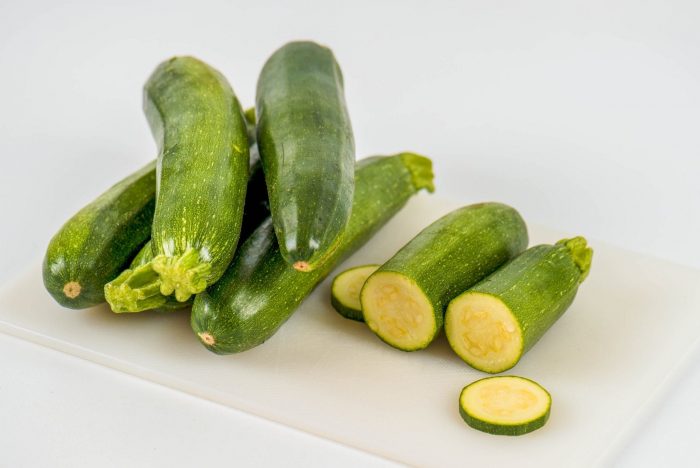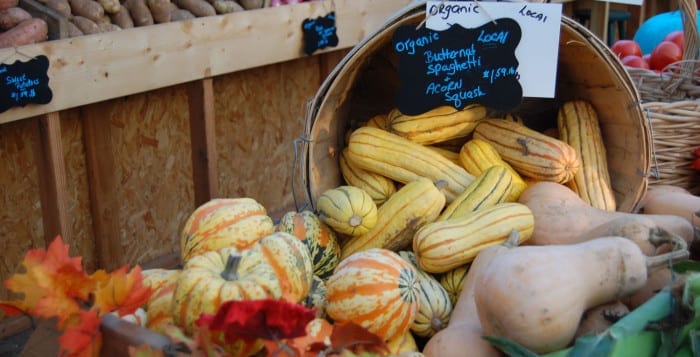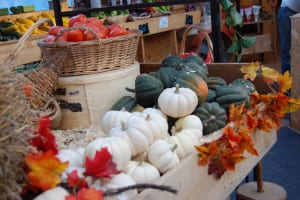By Barbara Beltrami
From the Neanderthal clubs to the delicate little cigar-sized courgettes and everything in between, the season’s bumper crop of zucchini has arrived. While there’s absolutely nothing wrong with sautéing them in a little butter or olive oil, there are so many options for integrating them successfully into somewhat more complex recipes, that it would be a shame to limit oneself to the basic preparation.
There are ratatouilles and quiches, pastas and soups, casseroles and omelets, and so much more. Three zucchini recipes among the many that I’ve been using for years are those for Chocolate Zucchini Cake given to me by the mother of my daughter’s elementary school teacher, Zucchini-Tomato Fritters, an attempt to re-recreate those my grandmother made and Zucchini Soup from a woman who worked for my father.
Chocolate Zucchini Cake
YIELD: Makes 6 to 8 servings
INGREDIENTS:
For the cake:
Unsalted butter and flour for preparing pan
1 1/2 cups flour
1/2 cup semi-sweet chocolate chips
1/4 cup cocoa powder (not Dutch process)
1/2 teaspoon coarse salt
1/2 teaspoon baking soda
1/4 teaspoon cinnamon
1 tablespoon espresso coffee powder
1 1/4 cups sugar
1/2 cup vegetable oil
2 large eggs
1 teaspoon vanilla extract
1 medium zucchini, washed, grated, drained and squeezed dry
For the icing:
1 1/2 cups heavy cream
14 ounces bittersweet chocolate, broken into pieces
DIRECTIONS:
For the cake:
Preheat oven to 350 F. Butter and flour bottom and sides of 9”-square cake pan. In a small bowl toss chocolate chips with one tablespoon of the flour; in medium bowl whisk together remaining flour, cocoa, salt, baking soda, cinnamon and espresso coffee powder. In a large bowl with mixer on medium speed beat together sugar, oil, eggs and vanilla until smooth; add flour mixture and beat two minutes on medium speed until well combined; add zucchini and beat another two minutes until well blended; fold in chocolate chips. Transfer batter to prepared pan; bake until cake tester inserted in center comes out clean, about 30 minutes. Let cool completely on rack.
For the icing:
In a heavy saucepan, boil cream, turn off heat, stir in chocolate and let rest until completely melted; if necessary stir with rubber spatula to hasten melting. Transfer to room temperature bowl, cover and refrigerate until ready to ice cake. Serve cake with chocolate or coffee ice cream.
Zucchini-Tomato Fritters
YIELD: Makes 4 servings
INGREDIENTS:
2 medium zucchini
2 teaspoons salt
4 scallions, minced
1 medium tomato, finely diced
1/4 cup flat leaf parsley, minced
1/4 cup fresh dill, minced
1 egg, beaten
1/4 cup flour
2/3 cup grated Parmesan cheese
1/4 cup olive oil
Coarse salt and freshly ground black pepper
DIRECTIONS:
Grate zucchini into colander; sprinkle with salt, toss and set over bowl to drain for 15 minutes. Remove, squeeze dry and place in a medium bowl. Add scallions, tomato, parsley, dill, egg, flour and cheese; mix well. In a large skillet over medium-high heat, warm oil; add batter by heaping tablespoonfuls and flatten with spatula or back of spoon; fry until golden, 3 to 4 minutes per side. Drain on paper towels. Season with salt and pepper. Serve hot or warm with fish, poultry, meat or beans.
Zucchini Soup
YIELD: Makes 4 to 6 servings
INGREDIENTS:
2 tablespoons olive oil
1 medium onion, chopped
4 medium or 2 large zucchini, chopped
3 to 4 cups chicken or vegetable broth
Salt and freshly ground black pepper, to taste
DIRECTIONS:
In a large saucepan over medium-high heat warm oil; stirring frequently, cook onion in oil until soft but not brown, about 5 minutes. Add zucchini, stir, then add broth; stir again. Raise heat to high, bring soup to a boil, then lower to keep at a simmer and stir occasionally until zucchini is very soft and mushy, about 20 to 25 minutes. Add salt and pepper, if necessary. Let cool at least 15 minutes, then puree in batches in blender or food processor until very smooth and creamy. Serve hot, cold, at room temperature or cold with croutons and a tomato salad.







